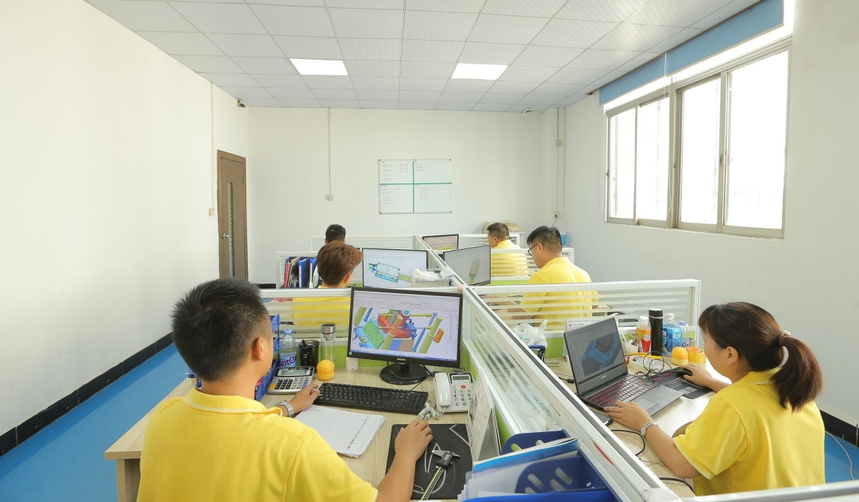|
Unveiling the Role of an Injection Mold Designer: Mastering the Art of Precision and Efficiency Injection Mold Designer IntroductionA flexible and popular manufacturing method for creating plastic components is injection molding. The talent of injection mold designer and knowledge are at the core of this procedure. These experts can turn an idea into a precisely planned mold that can produce high-quality parts because of a special combination of technical expertise, creativity, and problem-solving skills. We will delve into the world of injection mold designer in this blog, examining their crucial role, the abilities they have, and the difficulties they have when trying to achieve accuracy, effectiveness, and creativity in the mold design process. The Role of an Injection Mold DesignerThe task of an injection mold designer is to convert a product design into a mold design that permits the accurate and efficient manufacture of plastic components. Their main goal is to produce molds that enable the best part quality, productivity, and economics. This entails comprehending the demands of the part, choosing suitable materials, constructing the mold structure, and making sure the parts are filled, cooled, and ejected efficiently. Core Skills and ExpertiseThe skill set of injection mold designer comprises technical expertise, design mastery, and practical experience. Some essential abilities and knowledge needed include: Understanding of Injection Molding:Comprehensive knowledge of the injection molding procedure, including material behavior, flow dynamics, cooling theories, and part quality factors. CAD/CAM Proficiency:Mastery of CAD (computer-aided design) and CAM (computer-aided manufacturing) software for producing CNC tool paths and accurate 3D models of molds. Mold Material Selection:Knowledge of choosing the best mold materials based on aspects such as part geometry, manufacturing volumes anticipated, compatibility of materials, and cost concerns. Design for Manufacturability (DFM):Ability to optimize part and mold designs, taking into account elements like draft angles, wall thickness, gating, and ejection mechanisms, for effective and economical manufacture. Mold Flow Analysis:Proficiency in analyzing and optimizing mold designs using simulation tools, such as Moldflow, to ensure optimum filling, cooling, and part quality. Problem-solving Skills:Strong problem-solving skills are required of effective mold designers to address concerns with part design, moldability, complexity, and tooling limitations. Communication and Collaboration:Working well with cross-functional teams, including product designers, engineers, toolmakers, and manufacturing employees, requires excellent communication skills. Mold Design ProcessEach stage of the mold design process necessitates meticulous attention to detail and accuracy. An overview of the typical steps is provided below: Product and Part Analysis:The first stage is to comprehend the needs for product design, functional requirements, and part geometry. The design of the mold is aided by examining the part’s characteristics, including its wall thickness, undercuts, draft angles, and key measurements. Mold Conceptualization:The mold designer creates a conceptual mold design based on the component analysis, taking into account variables like the number of cavities, gating options, ejection techniques, and parting line determination. 3D Modeling and Detailing:The injection mold designer uses CAD software to construct a thorough 3D model of the mold that includes elements like core and cavity blocks, cooling channels, ejection systems, and runner systems. To ensure correct fit, functioning, and manufacturability, attention to detail is essential. Mold Flow Analysis and Optimization:To examine the filling, cooling, and ejection behavior of the mold design, mold flow simulation software is used. Through this research, possible problems can be found and the mold design can be optimized for better component quality and manufacturing efficiency. Tooling Design:After the mold design is complete, the mold designer produces thorough tooling drawings that provide toolmakers with exact requirements. Dimensions, tolerances, material requirements, and other crucial details required for the mold’s manufacture are shown in these drawings. Collaboration and Iteration:Throughout the design process, effective communication and collaboration with many stakeholders, such as toolmakers, product designers, and engineers, is crucial. A strong and optimized mold design is made possible by feedback and iterative changes. Finalizing and Handoff:The mold design is completed after careful examination, and all pertinent documentation, including CAD files, tooling drawings, and specifications, is ready to be given to the tooling department for mold fabrication.  Challenges and InnovationsNumerous obstacles must be overcome for injection mold designer to stay on the cutting edge of their industry. Some such difficulties include: Complex Part Designs:To accommodate complex geometries, undercuts, and tight tolerances, injection mold designer must come up with novel solutions as a result of improvements in product design and the growing demand for sophisticated parts. Material Selection:Mold material selection must take into account elements including mold life, toughness, heat transmission capabilities, and compatibility with the molded material. The performance and longevity of a mold can be considerably impacted by the choice of materials. Cost and Time Constraints:Meeting strict production deadlines while designing molds that balance cost-effectiveness and efficiency is a never-ending problem. To minimize material waste, shorten cycle times, and simplify production procedures, Injection mold designer must optimize their designs. Emerging Technologies:Mold design can benefit from the quick development of technologies like conformal cooling, additive manufacturing, and in-mold sensing systems. Improved mold performance can result from keeping up with these developments and applying them to the design process. ConclusionThe success of the injection molding process is greatly influenced by the designers of injection molds. Their proficiency in mold design, material selection, and optimization techniques enables the efficient and accurate production of high-quality plastic components. They support innovation and ongoing mold design improvement with their knowledge, skills, and capacity for problem-solving. We can appreciate the art and science that go into the construction of the molds that form our everyday plastic products by knowing the crucial function of an injection mold designer and the difficulties they confront. To create the best mold designs and enhance injection molding technology, cooperation between designers, engineers, and manufacturing experts is essential. Designing injection molds requires a high level of accuracy and efficiency, and they are responsible for creating the molds that give our world its shape. |







